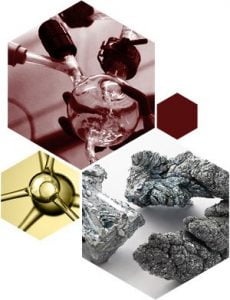
Aluminum Acetylacetonate
Properties

- We can offer items in bulk or custom. For other quantities or purities, please request a quotation.
- All prices are subject to change.
Related Products
| Product# | Name | Purity |
|---|---|---|
| 1006-5 | Aluminum Acetylacetonate | 99.9% |
Information about Aluminum Acetylacetonate / CAS 13963-57-0
Aluminum Acetylacetonate (Al(AcAc)₃) is a widely used Aluminum coordination complex. This stable, moisture-resistant compound is highly soluble in organic solvents and finds extensive applications in organic synthesis, materials science, industrial coatings, microelectronics, and specialty polymer production. Its unique properties, including thermal stability, volatility, and metal-ligand bonding strength, make it an essential precursor in the development of advanced materials, high-performance catalysts, and specialty coatings. Researchers and industries utilize Aluminum Acetylacetonate for its ability to control chemical reactivity, improve material properties, and facilitate high-performance applications.
As a coordination complex, Al(AcAc)₃ exhibits good solubility in organic solvents such as toluene, acetone, and alcohols, allowing for easy integration into various chemical processes. Its controlled thermal decomposition enables its use in vapor-phase processes, making it a preferred precursor in film deposition techniques. Unlike some metal acetylacetonates, Aluminum Acetylacetonate offers excellent moisture resistance and long-term stability, simplifying handling and storage for researchers and manufacturers.
In the field of catalysis, Aluminum Acetylacetonate is commonly used as a Lewis acid catalyst in organic synthesis, particularly in polymerization and condensation reactions. Its role in initiating polymerization processes has enabled it to find a number of specific uses in the production of high-performance plastics, resins, and composite materials. Additionally, it acts as a stabilizing agent in sol-gel chemistry, enabling the controlled synthesis of metal oxide films, nanomaterials, and hybrid organic-inorganic structures. Due to its strong chelating ability, Aluminum Acetylacetonate enhances the thermal stability and mechanical properties of polymer matrices, making it an integral component in the formulation of high-durability coatings, high-temperature adhesives, and protective finishes for automotive and industrial applications.
Another significant application of Aluminum Acetylacetonate is in thin film deposition and advanced material fabrication. The ability of Al(AcAc)₃ to undergo thermal decomposition at moderate temperatures makes it a valuable reagent for depositing Aluminum Oxide (Al₂O₃) layers, which play a crucial role in enhancing surface properties, improving corrosion resistance, and optimizing dielectric performance in electronic devices and optical coatings. The films are widely used in microelectronics, semiconductor fabrication, photovoltaics, and protective coatings, where controlled thickness and uniform composition are critical.
- Rajib, A., Enamul, K. M., Kurosu, S., Ukai, T., Tokuda, M., Fujii, Y., … & Shirai, H. (2020). Synthesis of AlOx thin films by atmospheric-pressure mist chemical vapor deposition for surface passivation and electrical insulator layers. Journal of Vacuum Science & Technology A, 38(3).
- Ortiz, A., & Alonso, J. C. (2002). High quality-low temperature aluminum oxide films deposited by ultrasonic spray pyrolysis. Journal of Materials Science: Materials in Electronics, 13, 7-11.
Safety
- H302 Harmful if swallowed.
- H315 Causes skin irritation.
- H320 Causes eye irritation.
- H335 May cause respiratory irritation.
- P261 Avoid breathing dust/fume/gas/mist/vapours/spray.
- P264 Wash skin thoroughly after handling.
- P270 Do not eat, drink or smoke when using this product.
- P271 Use only outdoors or in a well-ventilated area.
- P280 Wear protective gloves/protective clothing/eye protection/face protection.
- P362 Take off contaminated clothing and wash before reuse.
- P301+P312 IF SWALLOWED: call a POISON CENTER or doctor/physician IF you feel unwell.
- P302+P352 IF ON SKIN: wash with plenty of soap and water.
- P304+P340+P312 IF INHALED: Remove victim to fresh air and keep at rest in a position comfortable for breathing. Call a POISON CENTER or doctor/physician if you feel unwell.
- P305+P351+P338 IF IN EYES: Rinse cautiously with water for several minutes. Remove contact lenses, if present and easy to do. Continue rinsing.
- P332+P313 IF SKIN irritation occurs: Get medical advice/attention.
- P403+P233 Store in a well-ventilated place. Keep container tightly closed.


